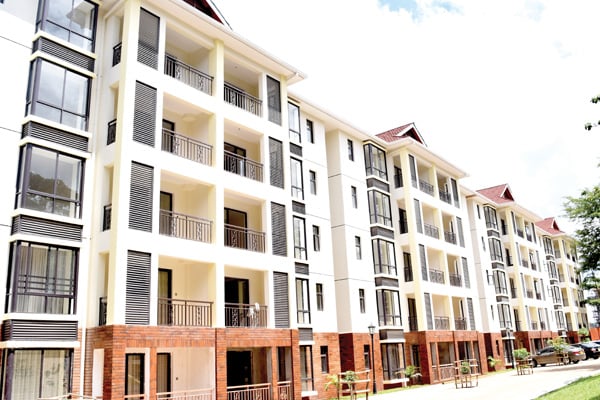How to make affordable housing dream come true

That the government plans to execute a Sh250 billion five-year plan to ensure the affordable housing project takes off is laudable. Demand for affordable housing is increasing rapidly given the growth in urban population.
There is a huge imbalance between demand and supply of affordable houses. The project will be a major boost to the construction industry which can enhance job creation and economic growth.
To implement it, the State will raid Treasury for Sh50 billion and a further Sh200 billion from pension funds, Assets Under Management (AUM) and diaspora funds.
The injection of the funds is expected to increase the supply of new housing units to 250,000 per annum and increase the percentage of affordable housing supply from two to 50 per cent.
While this is a good idea, to make it better, the State and private sector must have a conversation about the ease and cost of doing business in this sector.
There are a couple of loose ends that must be tied to ensure that affordable housing is not only a reality but also accessible for everyone.
How the Sh250 billion kitty will pan out depends on what incentives the government will give to investors.
To borrow from the late President Mwai Kibaki’s tenure, tax cuts for importation of motorcycles saw the growth of “boda bodas”, which despite being unruly, are the pillar of the transportation and a good example on how to facilitate the growth of a sector.
Despite the financing, investors in the construction sector must be given incentives which may include lowering the costs of inputs, tax breaks such as zero-rating of stamp duty for first-time home owners, or tax holidays.
The State should also target critical players like those who manufacture cement and steel for tax relief which must trickle down to the buyers.
To reap the full potential of the real estate sector, the policies of land must also be business-friendly. For example, the purchase of land is a tall order in Kenya today, and the increasing of Capital Gains Tax (CGT) from five per cent to 15 per cent makes the whole idea of making investment in the built environment cheaper start to lose meaning.
Another thing, what happened to the computerization of the land registries to get rid of the corruption pitfalls? Using 18th century technology to sort 21st Century problems will not help this critical sector.
Where people feel they are not safe and property are not secure, investors’ appetite dips and that is how the country stymies growth of the sector.
The government must also ensure endless wrangles between county and national governments, especially in areas of land rates and taxes, stop. When the rules are inflexible, they disincentivise investments.
In the spirit of enhancing affordable housing projects, there is need to sort out other issues like the circulation and reliable electricity, clean water, sanitation services and an efficient transport system.
It will take a multi-sectoral approach to ensure these challenges are addressed so that affordable housing goals are realised.
If these combination of factors are not met, then affordable housing project may end up being a pipe dream.
— The writer is the Business Editor, People Daily












